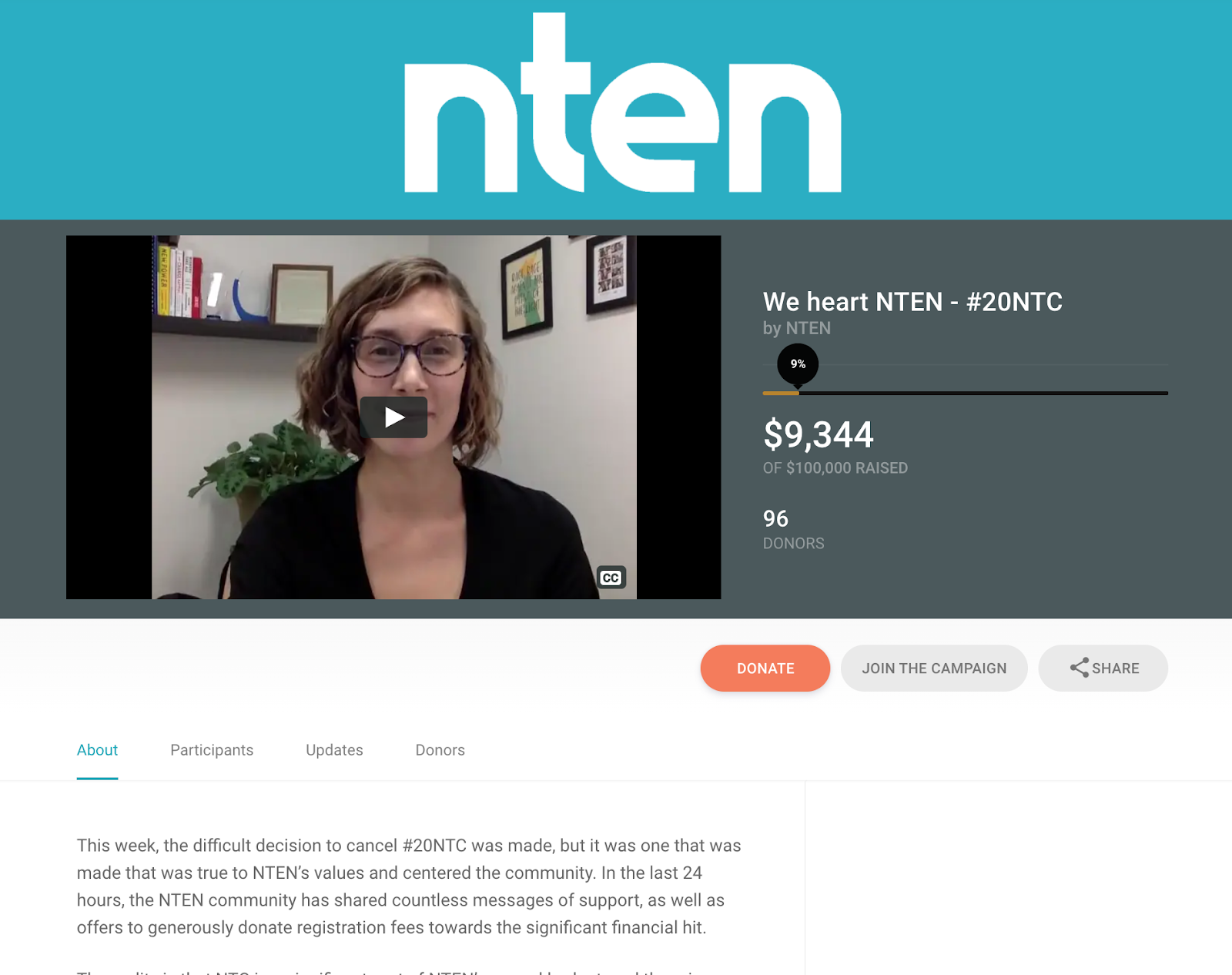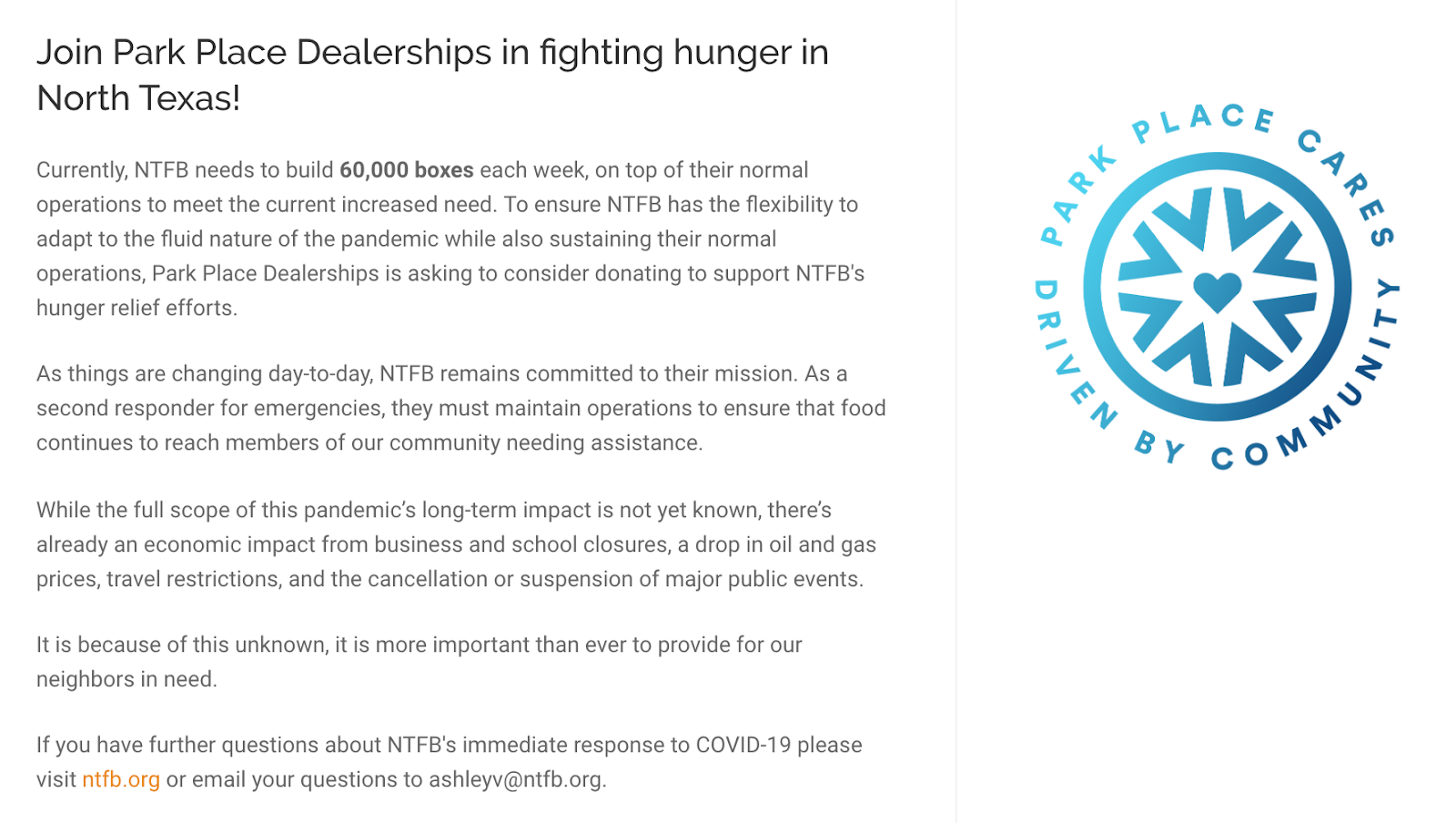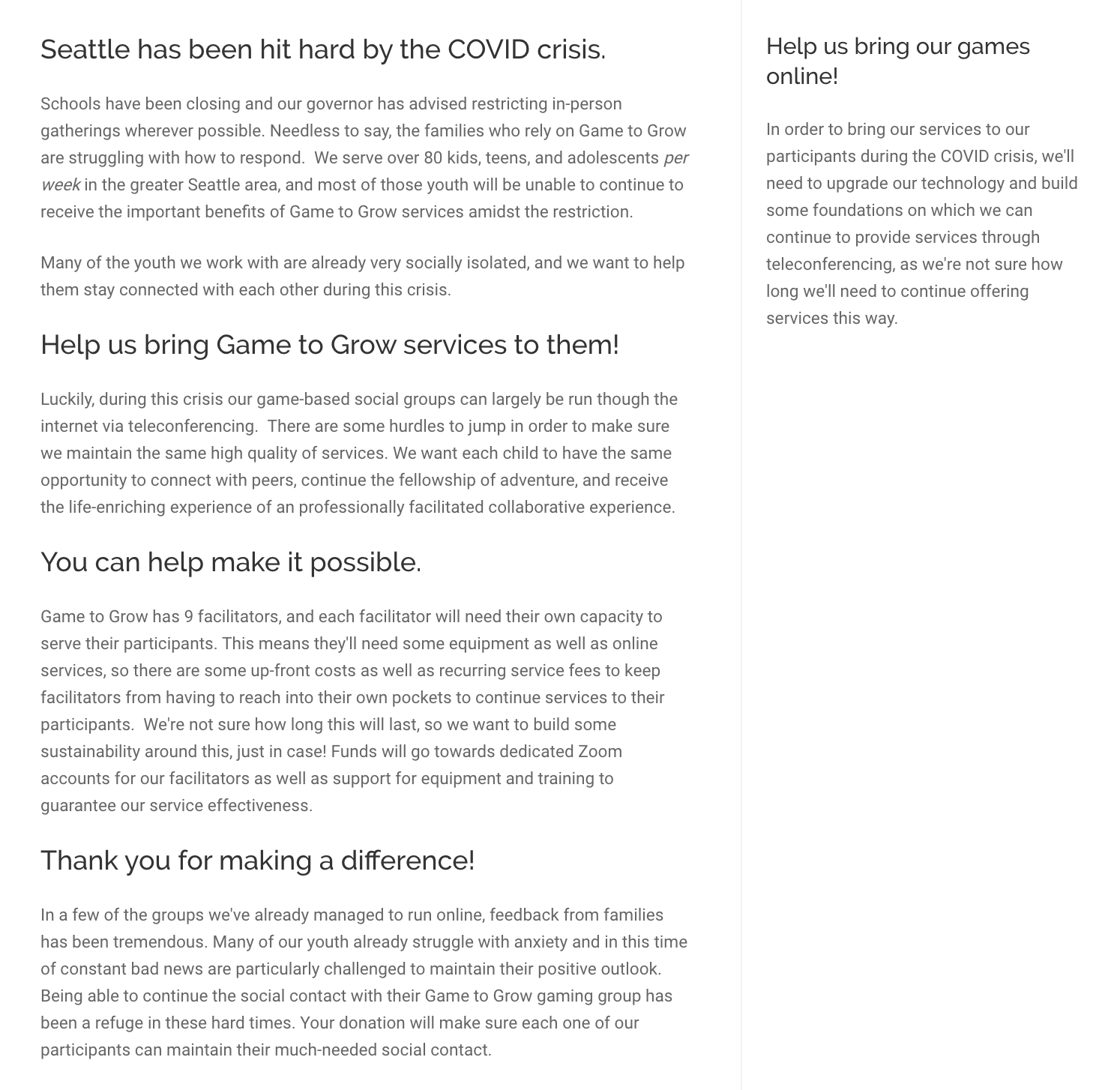The coronavirus has been disruptive, to say the least.
Not to pile on more bad news, but add in the risk of a recession and a spike in unemployment, at this time even the most organized nonprofit fundraising professionals are grappling with how to move forward.
We don’t know when self-quarantining will be over but we do know that with the lockdown extended to the end of April (for now), nonprofits are going to have to change up their fundraising plans.
Long story short, any kind of in-person fundraising (galas, breakfasts, runs/races, etc) is going to get scrapped.
But, you still need to meet your fundraising needs.
To navigate these uneasy times, the only solution is to embrace a comprehensive digital fundraising strategy immediately.
It’s going to be a process and a new fundraising strategy may not be conceived in a day, but we’ve got a few steps to help you hit the ground running to help you transition to virtual fundraising.
1) Make A List Of All Fundraising Activities
From new asks, donor retention strategies, planned events, and more, make a list of all your fundraising activities so can discover all of your virtual fundraising needs.
This could also be a great time to brainstorm new fundraising ideas with your team (via teleconferencing of course) by discussing specific projects or issues you’re working on.
Some activities you won’t want to leave out:
- Galas and other themed parties
- 5Ks, walks, and other athletic tournaments
- Monthly or recurring giving programs
- Direct mail campaigns
- Donor thank you processes
- Email nurture series
- Peer-to-peer fundraisers
- And more
Having a comprehensive list of fundraising activities can help you retool and move on with the next step in transitioning to virtual fundraising, which involves assessing what can be moved online and what needs to be reimagined.
Download your Virtual Event Planning Guide and Calendar Template:
[amp-optin id=24991]
2) Assess Which Fundraising Activities Can Be Transitioned To Virtual Fundraising
Imagine the opportunities. While you may not be able to translate the exact event or idea online, you can always get creative and adapt parts.
For instance, let’s say an organization was planning a tree-planting event for Earth Day. Well, since they can’t do that anymore, they can find an alternative solution.
Instead of having a live event tree planting, the organization can set up a fundraising page and give people the opportunity to ‘buy a tree’ by making a donation, so that their tree can be planted in the future.
When you’re accessing what can be moved online, try running through these questions to jumpstart your brainstorming process:
- Is it an event that can be live-streamed? If so, consider Youtube or Zoom for a more interactive experience.
- Does an event involve food or drink? Consider suggesting an easy menu item people can prepare themselves and take to a Zoom meeting.
- Had a race, walk, or climbed planned? Have people participate on their own and encourage them to share their participation on social media. You can set up a peer-to-peer to capture registrations and donations.
- Had in-person trainings in the works? Switch to a webinar format. You can also record your webinars to be viewed later by people who may not be able to virtually attend.
- Gearing up a physical auction? A silent online auction is actually way easier to set up than a live one. You may want to consider an online auction platform too.
- Want a way to get people in the same “room” and promote a sense of community? Try hosting a virtual movie night with Netflix Party.
A more tangible example is NTEN, an organization, like others, that had to make the hard decision to cancel their annual tech conference. In order to honor contracts made, NTEN set up a crowdfunding campaign to ask for support to help recoup losses.

Tip: Need some virtual fundraising ideas? We’ve got 14 options to choose from.
3) Explore New Virtual Fundraising Opportunities
We’re living through an experience that’s unprecedented in recent history.
And with that, you have the opportunity to explore new ways of fundraising that you’ve never tried before. It’s time to experiment and explore new opportunities for fundraising.
A great starting point is investing in your existing community. To source new ideas and to figure out what new needs have to be filled, make time to check in with your constituents. Some new opportunities worth trying out include:
- Virtual happy hours or lunches via Google Hangouts, Zoom, or Facetime
- Personal phone calls to touch base with your supporters
- Live streamed events through Facebook Live
- An ungala in lieu of a live gathering
- A virtual race (aka a “No Run Run”)
- A virtual conference
- And more
This will allow you to come up with something new or pivot your existing programming to reflect your constituent base and what they’re currently experiencing.
In light of these times, it may feel daunting and uncomfortable to ask for support but you may be surprised at how many people are willing to step up. Of course, we recommend exercising empathy, patience, and grace during this uncertain period and having that reflected in your messaging.
The North Texas Food Bank said it best, “While the full scope of this pandemic’s long-term impact is not yet known, there’s already an economic impact from business and school closures, a drop in oil and gas prices, travel restrictions, and the cancellation or suspension of major public events. It is because of this unknown, it is more important than ever to provide for our neighbors in need.”
In essence, we don’t know the full extent of the coronavirus but we do know that our neighbors are still going hungry. This is why it’s so important to continue fundraising.

So, what’s our biggest takeaway when it comes to messaging? Be fully transparent. The coronavirus may have halted certain plans, but you can still have open, honest conversations about what your organization needs and how others can support. Transparency is certainly reflected in messaging put out by Game to Grow, a nonprofit looking to help youth stay connected via gaming during this period of social isolation:

Once you’ve assessed all your fundraising opportunities, you’ll want to revise or create a new virtual fundraising plan. Use this fundraising calendar template and planning guide to help you successfully lay the groundwork for your fundraising.
4) Find A Virtual Fundraising Solution That Works For You
During this crisis, you can still meet your fundraising needs, but you need to act fast and rapidly transition to a comprehensive virtual fundraising strategy.
And, nothing can help make your transition easier than using a tool that uncomplicates digital fundraising for you.
CauseVox can help you get all your virtual events, peer-to-peer fundraising campaigns, donation pages, and more up and running quickly and easily, all under one roof.
Ready to make the transition to virtual fundraising?
Get started today for free with CauseVox.
Book your free Virtual Fundraising Consultation with an expert.




